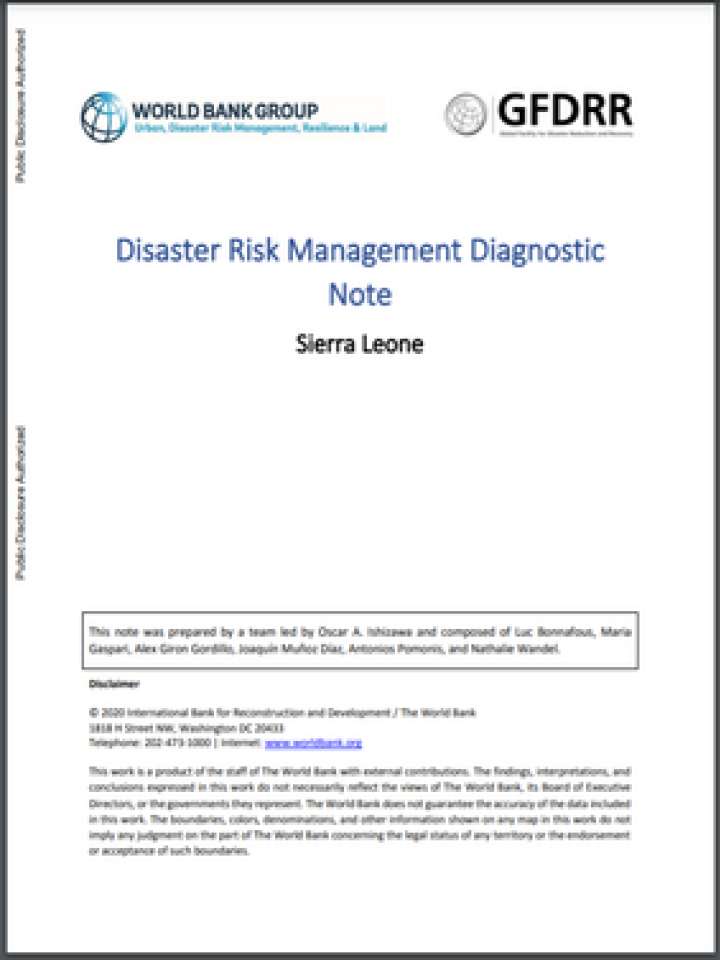Sierra Leone - disaster risk management diagnostic note
This diagnostic note focuses on the disaster risk management in Sierra Leone as of 2020. Sierra Leone is prone to natural hazards such as floods, landslides, tropical storms, coastal erosion, and droughts that cause severe economic damage and loss of lives with disproportionate effects on the poorest and most vulnerable. Climate change and underlying socioeconomic factors, such as the increase in urban population exposed to disasters, poverty, and low levels of economic development will most likely aggravate the impact of adverse natural events in the future. These further strains the coping capacity of Sierra Leone as a country which is still recovering from the Ebola outbreak of 2014-2016 and the current Coronavirus (COVID-19) pandemic. Epidemics and other health-related risks including cholera and dengue fever outbreaks in the aftermath of floods are another key concern, as evidenced by the fact that between 1980 and 2010, epidemics were the deadliest hazard in Sierra Leone, responsible for deaths due to disasters.
This note reviews the disaster and climate risk profile of Sierra Leone, assessed changes on future disaster and climate-related risk, the macroeconomic impact of disasters, institutional settings for disaster risk management, the financing of disaster and climate-related risks, and the impact of disasters on poverty and inclusion.
Explore further
